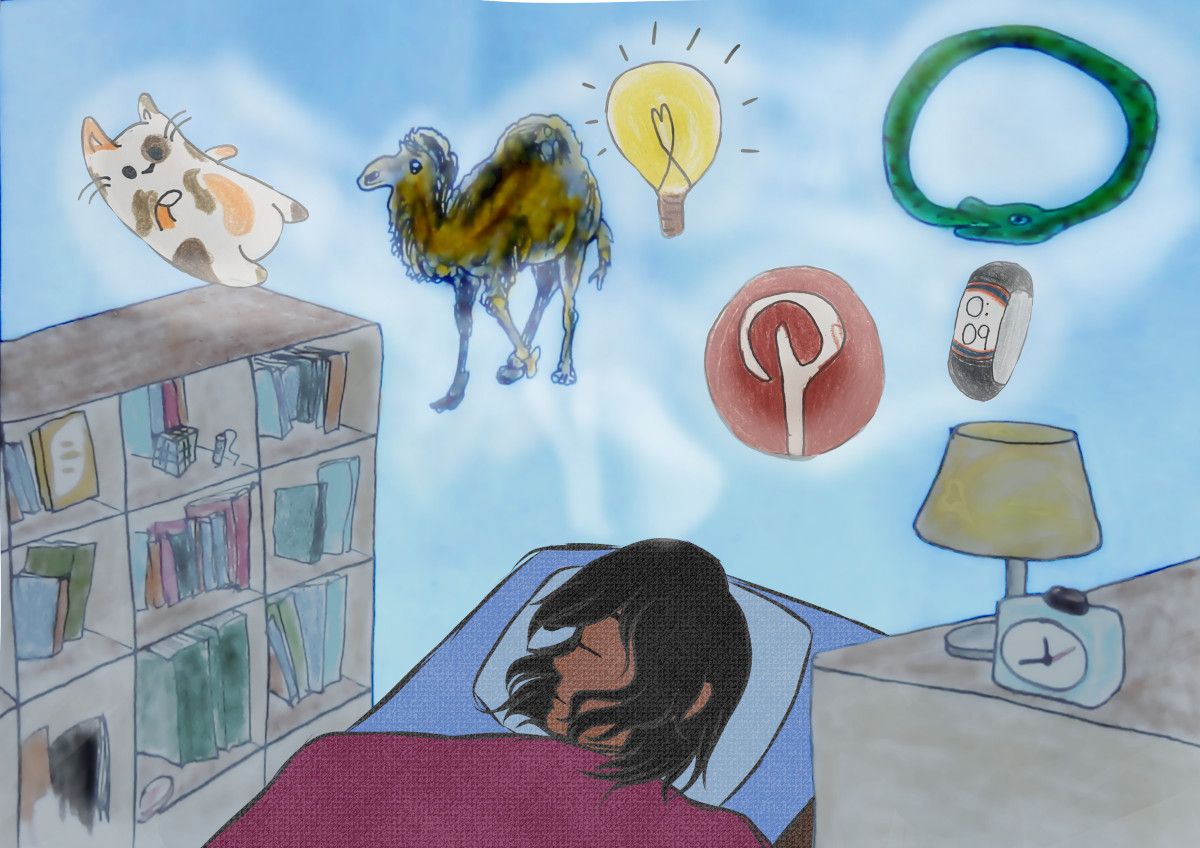Sleep On It
Falling to sleep might just give you creative ideas.

Falling to sleep might just give you creative ideas.
We all know where creativity thrives, right? I’m sure you’re picturing a fancy artist’s studio, with lots of light, unfinished canvases littering every wall, paints and brushes organised perfectly, not a bottle out of place. Or maybe, you’re thinking of creativity in terms of ideas, and see a busy meeting, with a team that works together beautifully, brainstormed ideas filling the room.
One last picture: maybe creativity thrives best in a writer’s room, darkened except for the light of a laptop screen, quiet but for the frenzied typing of keys.
Actually, creativity might be best seen in you, or me. Say it’s been a long day, and you’ve worked yourself exhausted. You put that book away, reach to turn off your lamp, pull your blankets a little closer. Though the outside world may call you lazy, perhaps that’s when creative ideas come best.
And why might that be? The answer may lie in a platform we all turn to for creative inspiration.
Google has many competitors. There’s DuckDuckGo, Yahoo, and Bing. And then there’s something you may not even think of as a search engine: Pinterest.
Wait, you say: isn’t that a social network? It might seem that way, but think about it. If you’re searching for something specific you go to Google, but if you’re searching for inspiration you go to Pinterest. That’s because Pinterest has a kind of fuzzy matching that shows you…not quite the same idea, but similar ideas, until you get to where you want.
And that’s how creativity works in your mind too. By making fuzzy connections.
Think back to when you were at your creative best. What were you doing before that? Chances are, the preceding activity was a boring one. Most people find the state of “not knowing what to do” — and so does your brain.
That’s why it works hard at this time, to find something to do.
This phenomenon was examined in a 2013 study. Thirty participants were given the mundane task of copying phone numbers into a book. Soon after the group finished its task, they were given a set of plastic cups and told to arrange them as creatively as possible. Another group of thirty were directly introduced to the second task. Surprise, surprise, the first group ended up with significantly more creative arrangements than the second!
Artists and writers across the world have attested to this. Agatha Christie credits the start of her writing career to boredom, saying that if she hadn’t been bored enough to start scribbling short stories on pieces of paper, she never would have been able to write.
The reasoning behind this is simple. When your mind is bored, its first instinct is to look for something to do. The brain activates the “default mode network”, that is, it sets itself on auto-pilot. Having nothing else to do, it sinks into a state of semi-consciousness — similar to when we are sleeping — making random connections and generating ideas: the start of creative thought.
These days we think of boredom as a bad thing: “Better get up and be productive!” we say. And if we’re feeling lazy? That’s even worse.
But is laziness such a bad thing? Users of the Perl programming language don’t think so. Here’s a footnote from the textbook Learning Perl, which talks about Perl creator Larry Wall being lazy:
We’re not insulting Larry by saying he’s lazy; laziness is a virtue. The wheelbarrow was invented by someone who was too lazy to carry things; writing was invented by someone who was too lazy to memorize; Perl was invented by someone who was too lazy to get the job done without inventing a whole new computer language.
Of course, this is a different kind of laziness, where you set up all your systems now to avoid having to do even more things in the future. It’s a very farsighted form of laziness.
Then again, creativity can also come from a very different kind of laziness — or at least, what we think of as the ultimate form: sleep.
Sleep and dreams have puzzled humanity for a long time. From being the subject of interpretation by Freud, science fiction movies like ‘Inception’ and the Eternal Sunshine of the Spotless Mind to the writings of Borges, dreams have pervaded the imaginations of artists and scientists.
Sleep, the subject that has fascinated philosophers and writers for millennia, is now being investigated by scientists. Various studies show that it is no longer cool to forgo your eight-odd hours of night sleep. Trackers, such as Fitbit and DREEM, employed to improve your sleep, have become big technologies. But what is it really? And what really happens when we sleep?
Dreams, especially, can be delightfully intriguing. If you’re lucky, you might even get into lucid dreaming, in which you’re acutely aware of the dream unfolding and can even control the events that occur.
Let’s say dream-you causes a wave of post-apocalyptic kangaroos to escape a facility. Hang on, you say, this is bizarre; it can only occur in a dream. So you try intentionally directing the dream…and it works! Now you have the reins of the dream in your hands: you can steer it where you want it to go, whether that’s capturing all of the kangaroos or aiding in the evacuation of innocent civilians.
All this dreaming occurs in a stage of sleep called REM, or Rapid Eye Movement. Equally intriguing, though, are the other three sleep stages: the non-REM ones known as N1, N2, and N3 respectively. N1 in particular is known to be linked to creativity.
We have different brain networks: sets of brain regions, that are activated at any time. Neuroscientists believe creativity happens when two of those brain networks interact. On one side is the daydream-friendly default mode network, where the brain generates ideas. The other is the cognitive control network, which more connected to the intentional part of the brain: the one that’s active when you’re focusing on a task or navigating a social situation.
The N1 sleep stage is known to engage both these networks. It also incorporates recent waking experiences and binds them with loosely associated memories — much like how Pinterest takes you from one line of inspiration to the next.
In this stage, the body is not fully deactivated. Therefore, we sometimes act out during this stage and never feel like we slept.
In a recent experiment, people were given strings of eight digits and asked to report the ninth following a set of rules. However, they did not know the hidden trick to solve it faster.
Then, participants had a 20-min break in which they were asked to recline and relax with closed eyes. Throughout the break, the researchers measured the brain and body activity of the participants, especially their brainwaves and the tension in their muscles. After the break, subjects were tasked to do the test again.
It turned out that those who spent at least 15 seconds of sleep in N1 performed thrice as better as those who didn’t. The scientists, therefore, concluded that spending some time in N1 inspires insight.
Not all kinds of boredom are conducive to creativity. There’s “acedia”, which manifests itself in a refusal to be in the present — think mindless Internet scrolling. Acedia effectively destroys any form of creativity. That’s because we’re stimulated by the videos, and posts we see…but not enough to get rid of that itch in the back of our minds, which in turn drives it even deeper.
So the next time you need to get your creative juices flowing, instead of scrolling through Pinterest, try memorising a few equations for chemistry, or just sit and stare at a wall. Who knows, maybe a masterpiece will be in the making.
There are still many questions that remain from the study. Why did N1 followed by N2 not trigger as much creativity? When the participants finished their N1 sleep, why did they take of the order of 94 trials of practising the task before they could find out the pattern?
Well, at least we have a potential way to find the answers: sleep on it.
